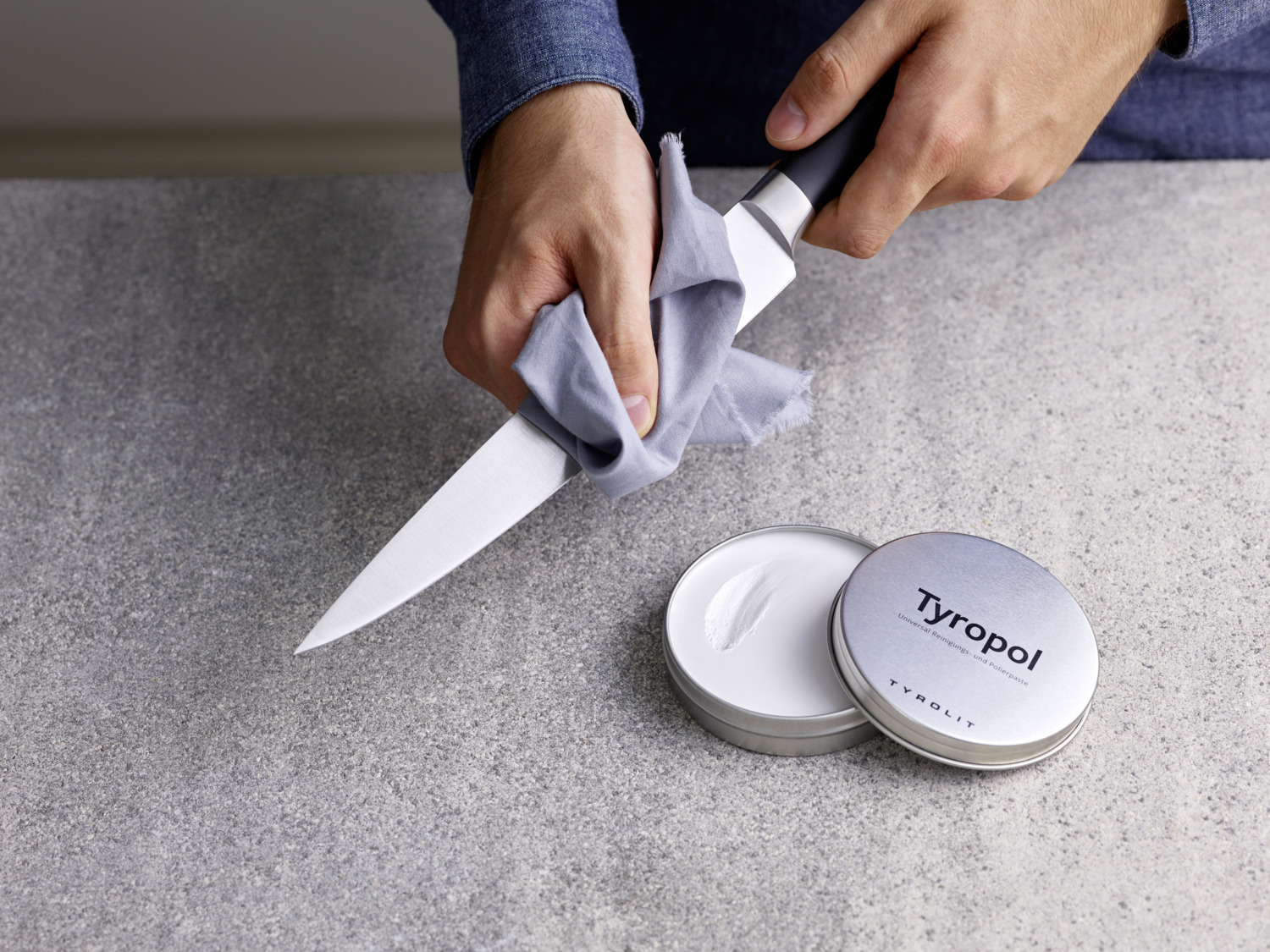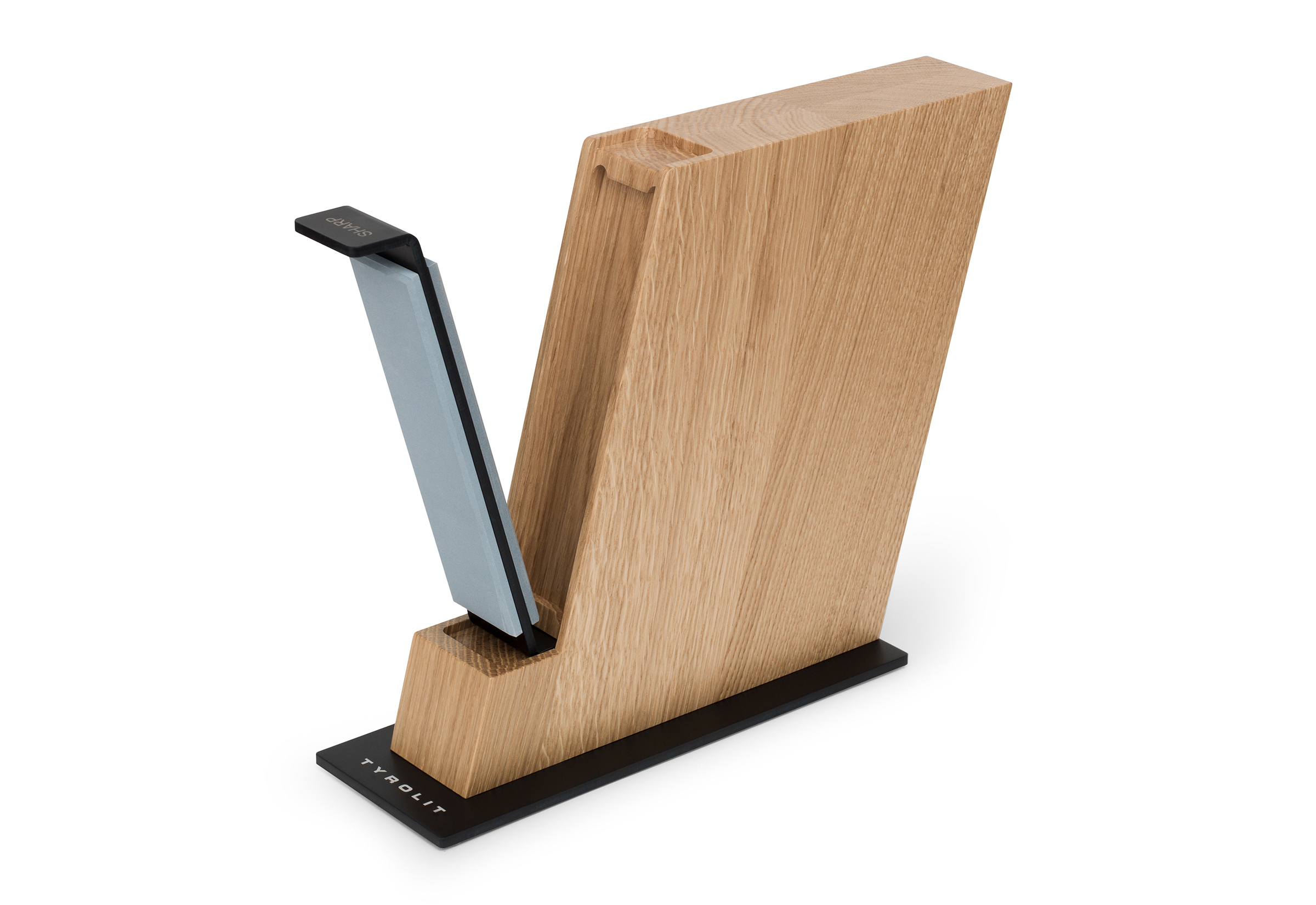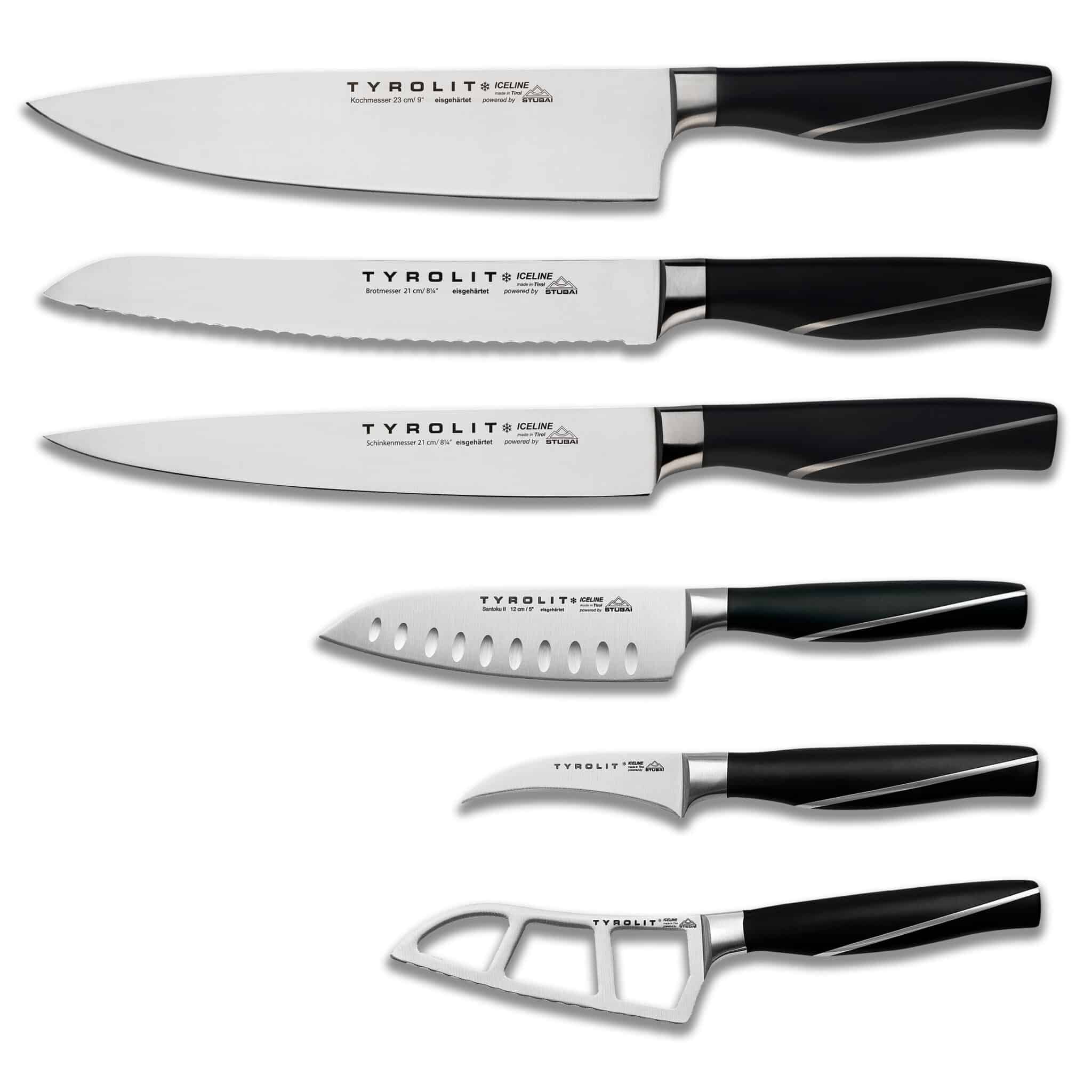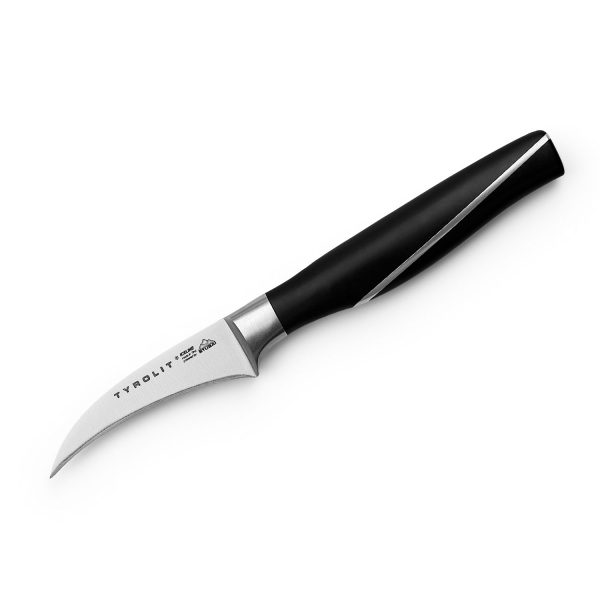The Fruit Knife – An Indispensable Kitchen Helper

In this post, we dive into the fascinating world of fruit knives. We shed light on how a fruit knife differs from other knives such as the peeling knife or the utility knife, research the special materials and production methods, and give valuable tips on cleaning and care.
Whether you are an amateur chef or an experienced professional chef, here you will learn everything you need to know about this essential kitchen tool.
Paring Knives, Vegetable Knives, and Utility Knives: How the Fruit Knife Fits In
The fruit knife has a firm place in the world of kitchen tools alongside other specialized knives such as the peeling knife, vegetable knife and the all-purpose knife. While the peeling knife is mainly used to remove the outer layers of vegetables and fruits, and the vegetable knife is characterized by its ability to achieve precise and clean cuts on various vegetables, the all-purpose knife, as the name suggests, is suitable for a variety of tasks.
But the fruit knife stands out with its special shape and size and is particularly optimised for cutting, dicing and processing fruit. It offers the precision needed for delicate fruits, perfectly complementing the other knives in their respective specialization.
The variety of kitchen knives: perfectly complemented by the specialised fruit knife
In the kitchen, you will find a wide array of knives: chef’s knives, paring knives, bread knives, filleting knives, vegetable knives, turning knives, nakiri, boning knives, cheese knives, tomato knives, utility knives, and also the fruit knife discussed here.
Despite this impressive selection, the fruit knife plays a crucial role. Unlike other knives, it is specifically designed for the fine and delicate textures of fruit. With its special size and shape, it allows precise cuts without crushing or damaging the pulp.
While other knives can be used in the kitchen more universally or for coarser work, the fruit knife is an indispensable addition for anyone who wants to present fruit in its best form.
Areas of application of the fruit knife and why it is not just another vegetable knife
In practical kitchen use, the fruit knife is an indispensable tool, distinguished by its specialized aptness for chopping fruit. While a vegetable knife is ideal for purposes such as chopping onions or dicing peppers, the fruit knife excels in the precise cutting of softer fruits. Picture yourself wanting to prepare thin apple slices for a fresh summer salad or juicy orange segments for dessert.
Here, the fruit knife proves that it is not just another vegetable knife. It glides effortlessly through the skin of a kiwi without crushing the delicate flesh and is perfectly suited for detaching grapes from their stem or artfully slicing strawberries
The special design of the blade allows for cutting close to the core of fruits like peaches or plums to maximize the amount of flesh obtained.
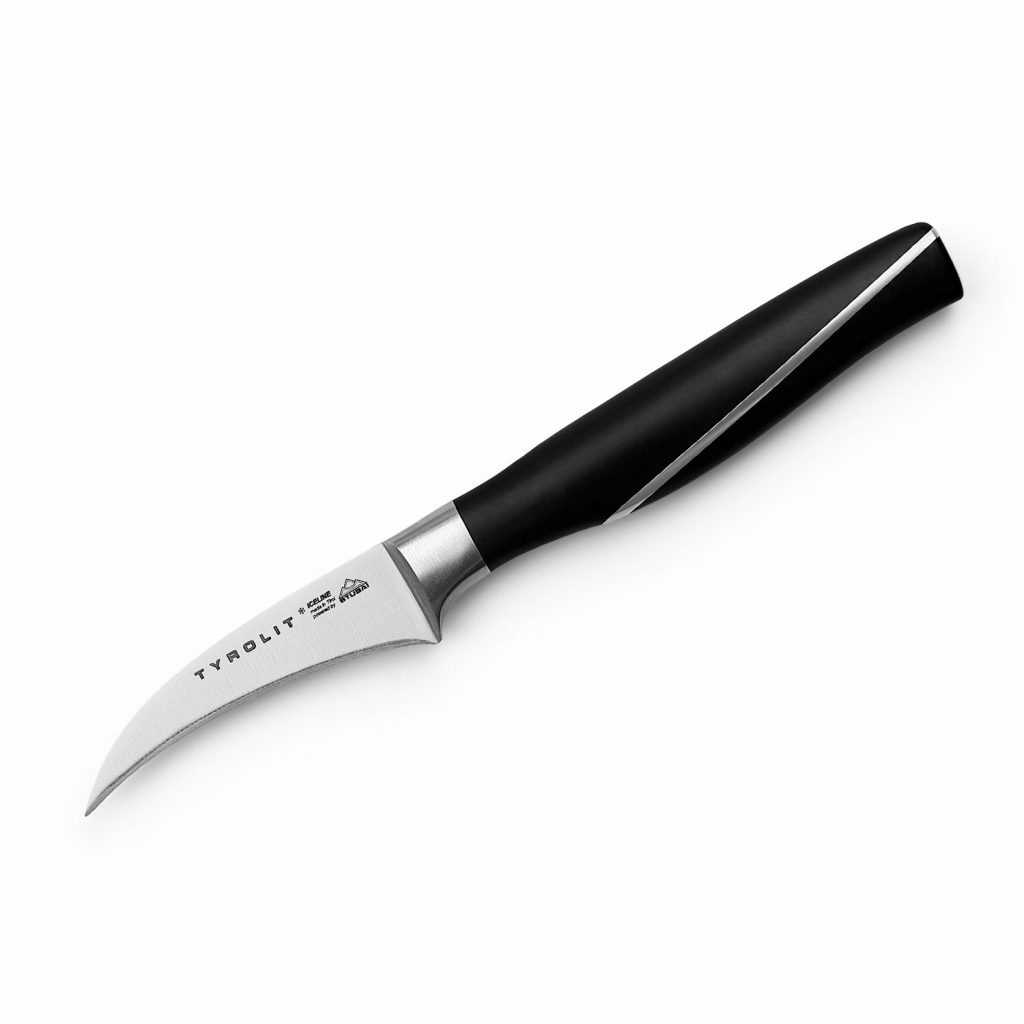
Manufacturing, Construction, and Materials of a Fruit Knife
In this section, you will learn more about the construction of the fruit knife and the materials from which it is made.
Blade shape and blade length: what makes the fruit knife unique?
The peculiarity of the fruit knife lies in its optimal blade length and the specific blade shape, which provides maximum control when cutting, especially with smaller and more sensitive fruits.
From Stainless Steel to Damascus: Different Materials and Their Influence on the Blade
Stainless steel is a particularly valued choice for kitchen knives due to its robustness and durability. A stainless steel fruit knife not only radiates value, but also guarantees consistent sharpness and high resistance to corrosion.
Damascus steel is also employed in the manufacturing process. It stands out due to its specialized forging technique and wavy patterning, offering additional strength but requiring considerably more care.
Handle designs: from traditional wooden handles to modern alternatives
While a traditional wooden handle is often appreciated for its aesthetics and pleasant hand feel, today there is a much more modern part of the knife that offers ergonomic advantages and is just as durable.
Tyrolit Life manufactures ergonomically shaped plastic handles that ensure good and safe handling and convince with their exceptionally appealing design and pleasant feel. Blade and handle are joint-tight and inseparably connected.
What can you do to maintain your fruit knife optimally?
A quality fruit knife is an investment that can last for many years, provided it is properly cared for. Cleaning, storage and sharpening play a central role in this. Proper handling and care not only extends the life of the knife, but also ensures its functionality and safety.
Cleaning: dishwasher or hand wash?
The difference between “dishwasher safe” and “dishwasher durable” is in their resilience: while “dishwasher safe” means the knife can be cleaned in the dishwasher, “dishwasher durable” signifies that it can withstand repeated washes over time without damage
Even though many modern knives are labeled as dishwasher safe, experts consistently recommend hand washing to maintain the blades in pristine condition. The aggressive cleaning agents and high water pressure of dishwashers can damage the blades. Thus, remember the importance of properly caring for and cleaning your knives!
Maintaining and Cleaning Knives – 12 Tips from a Tyrolean Knife Expert!
The first version is clear and accurately translated. Here is the final version: High-quality knives reward careful handling with longevity. Therefore, in this article, we give you 12 useful tips on how to clean and care for your kitchen knives.
Ideal storage options: knife block and magnetic variants
Proper storage of a fruit knife is essential not only to avoid damage, but also to ensure safety in the kitchen. This is where an important kitchen utensil comes into play: the knife block.
Tyrolit Life offers first-class solutions: These knife blocks impress with their design and functionality and represent a stable and safe accommodation for knives of various sizes. The magnetic knife blocks offer a combination of storage and the possibility to sharpen the knife directly.
Cost and quality
The choice of a fruit knife can vary from inexpensive entry-level models to high-quality custom-made products. But what exactly influences the costs and how is this reflected in the quality?
How much does a good fruit knife cost?
Fruit knives come in a wide price range. While you can find simple models for just a few euros, professional versions are a bit more expensive. The materials, manufacturing processes and handle variants used play a role here.
At Tyrolit Life – the Tyrolean company with many years of experience in knife production – you can get high-quality knives for processing fruit from around 40 euros. The knives are forged from one piece of stainless steel and are ice-hardened several times (56 HRC). Remember? HRC is the internationally used unit of measurement for the hardness of technical materials.
Conclusion
In summary, the fruit knife is an essential kitchen utensil. Especially for people who like to eat healthy and often include fruit in their diet, it is essential. As a valuable addition to any kitchen equipment, it facilitates many work steps related to fruits. You can buy our fruit knives in the Tyrolit Life online shop.

